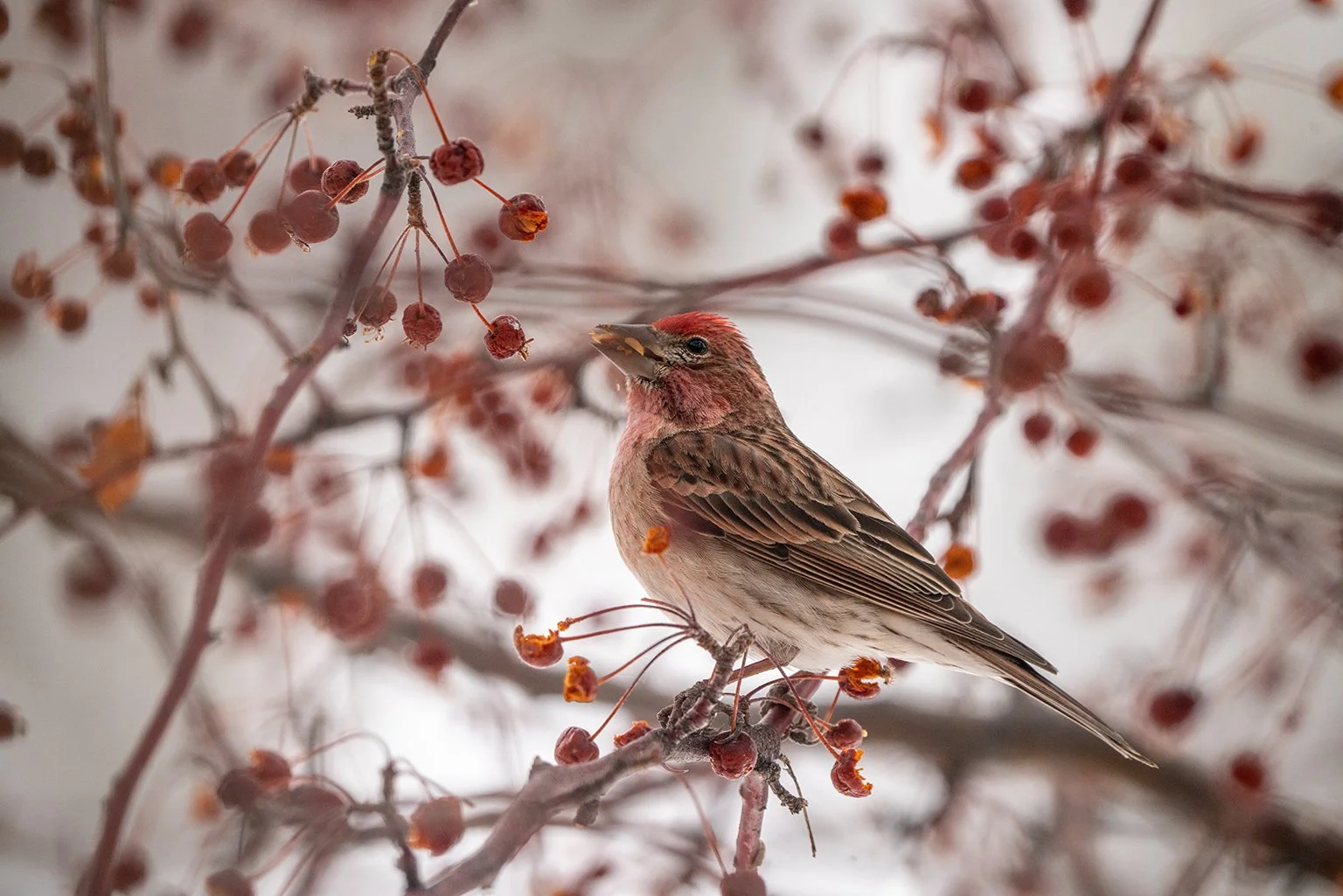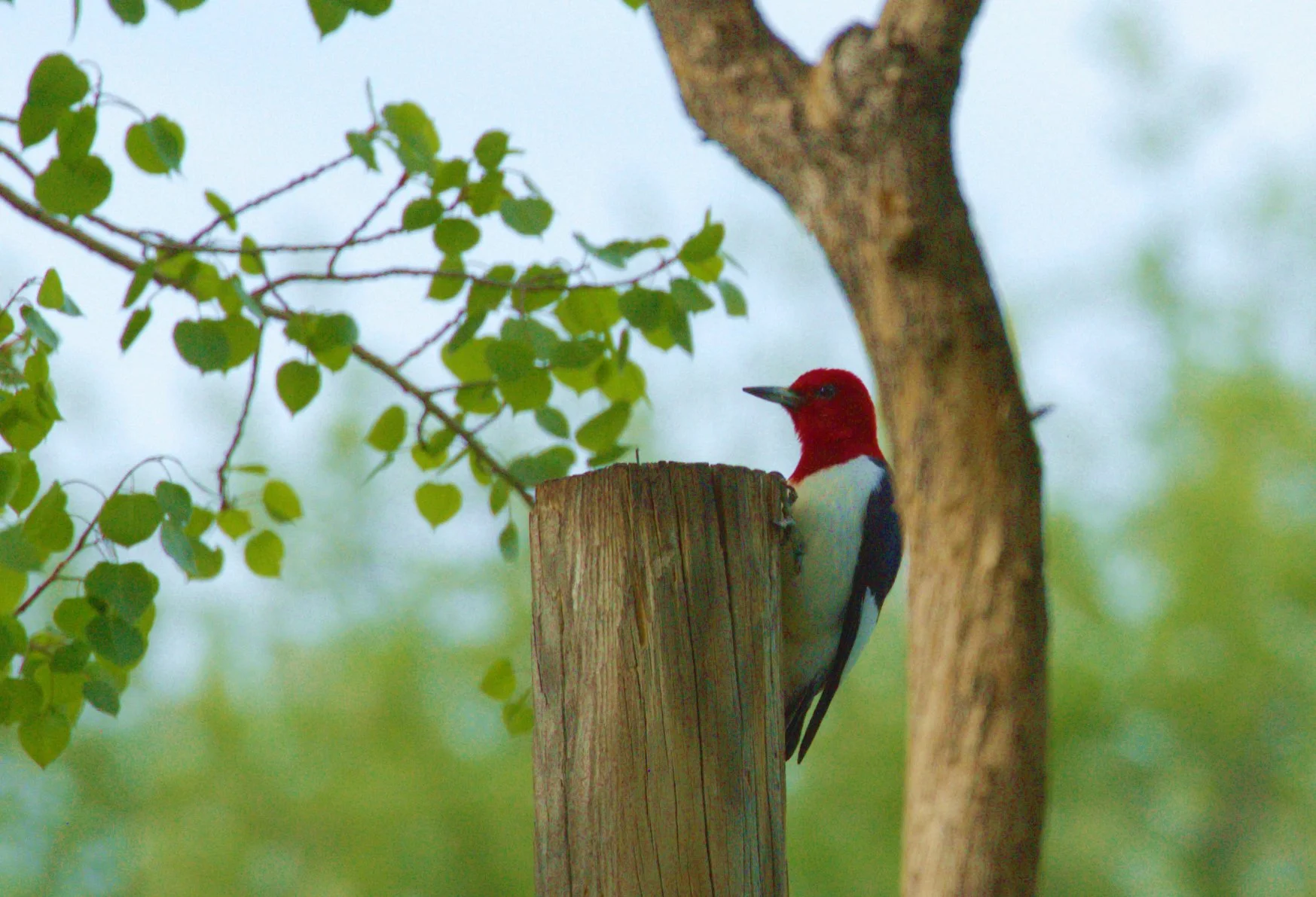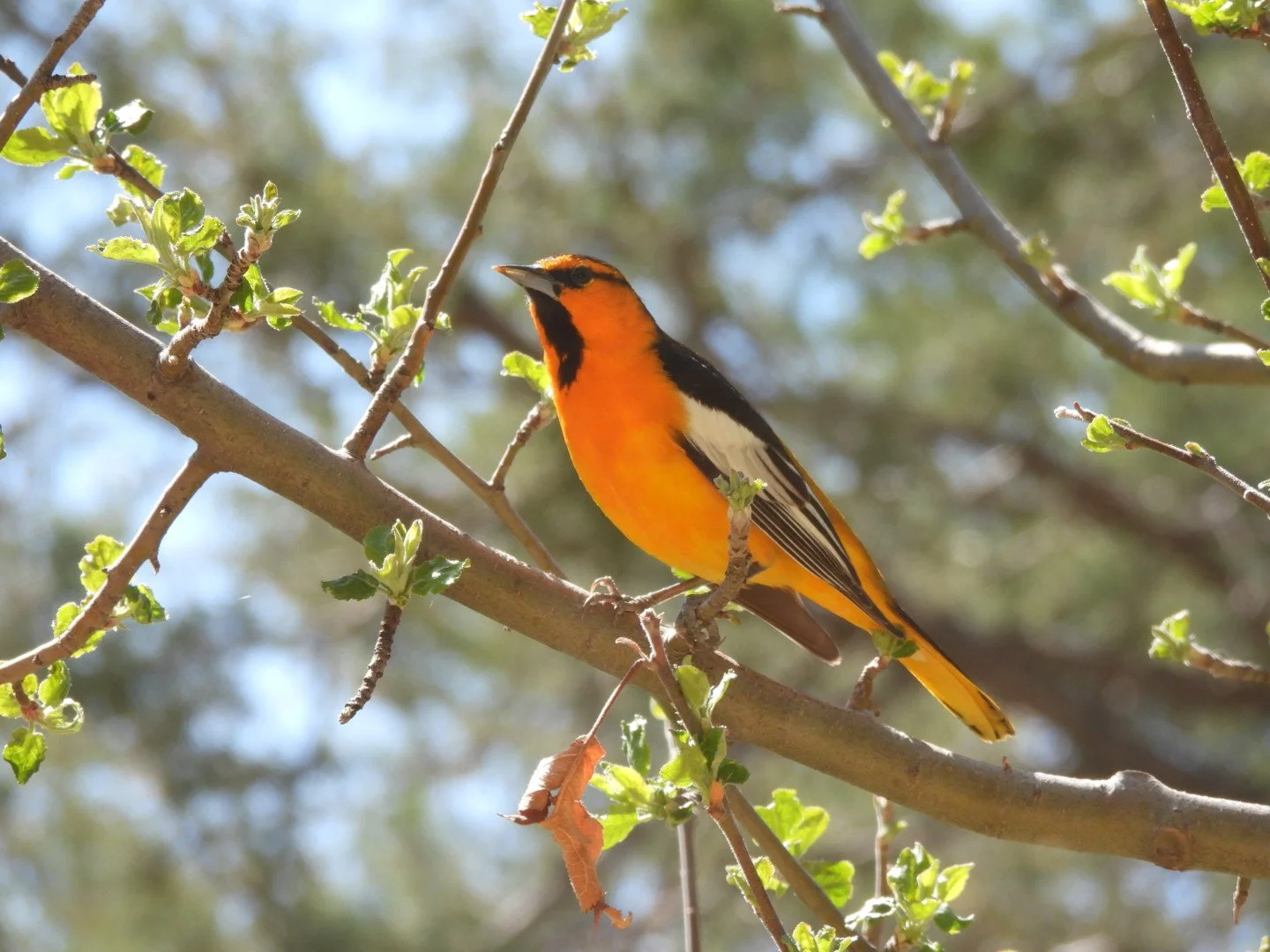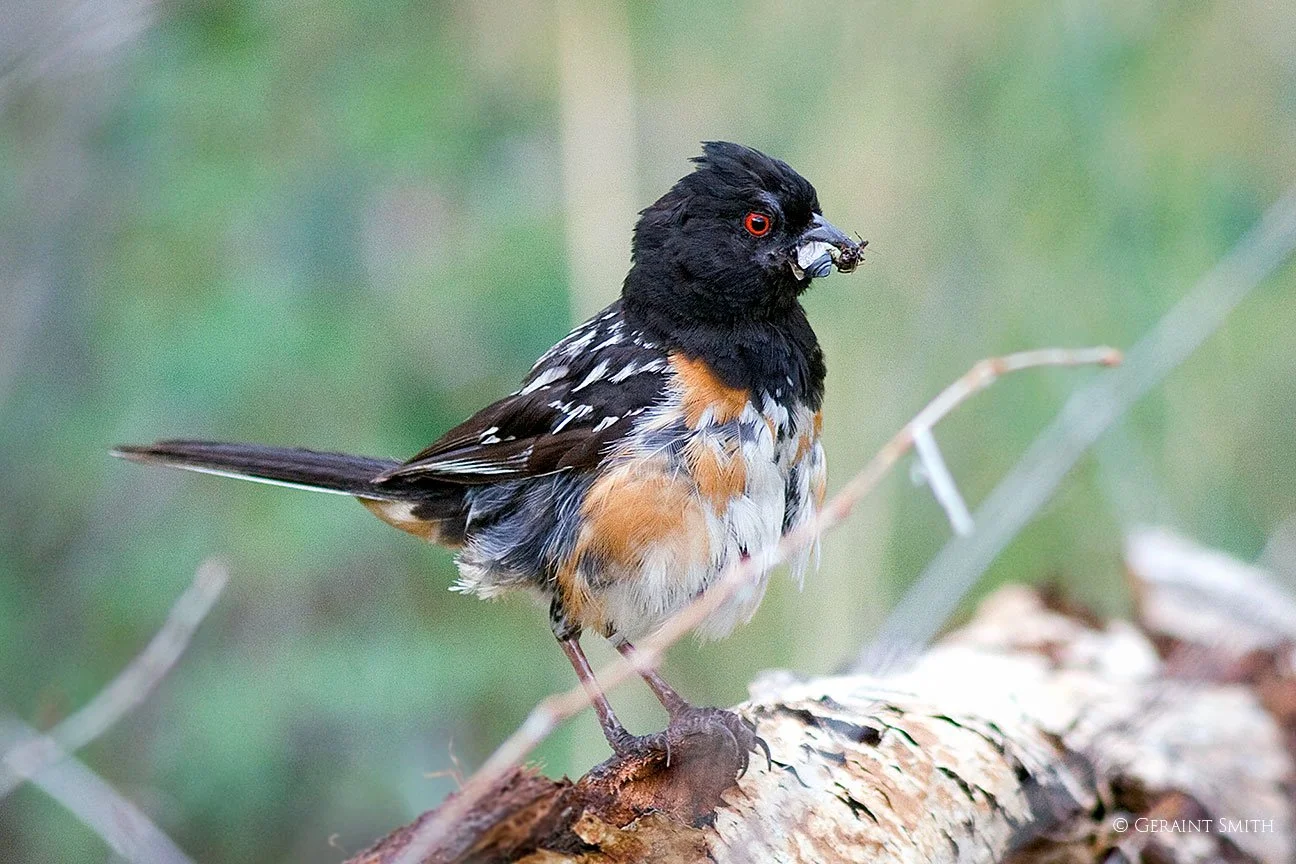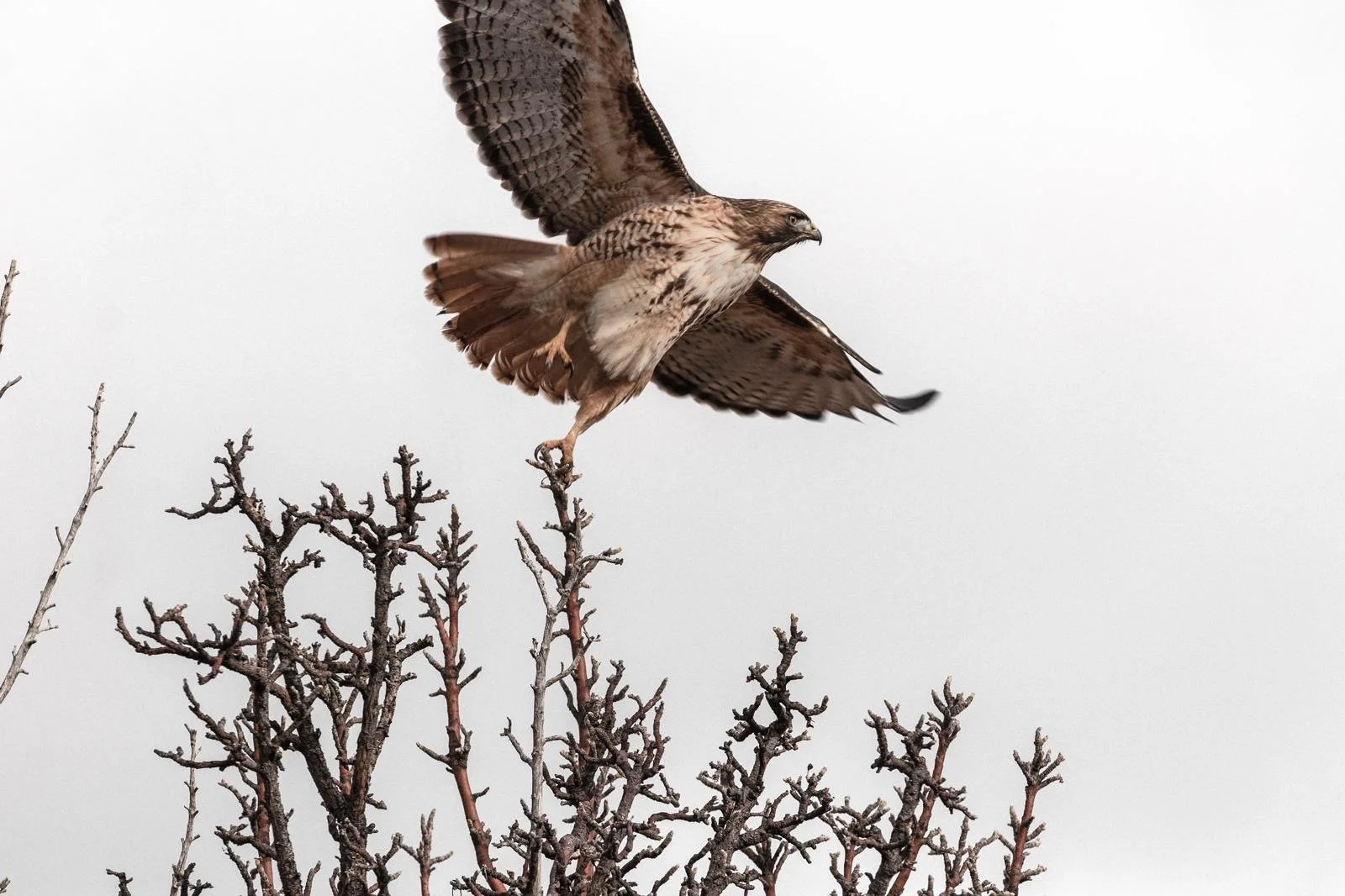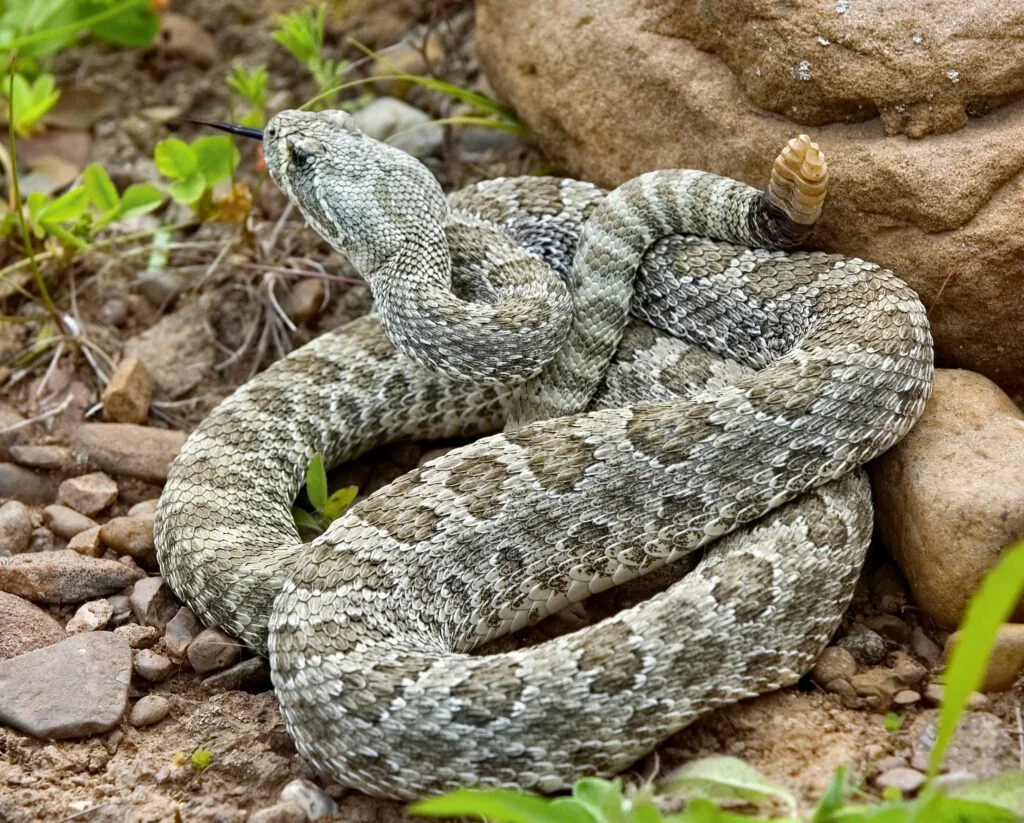
Wildlife of San Cristóbal, New Mexico
At the foot of the Sangre de Cristo Mountains and bounded on all sides by Carson National Forest, San Cristóbal provides a home for multiple species of wild animals, including abundant birds, many of which are migratory, species of greater conservation need (see below for definition) and two of which are listed as threatened, the bald eagle and the Yellow Billed Cuckoo. The photographs on this page are taken by San Cristóbal Residents.
Photo by Barry Norris
Birds
San Cristóbal is a natural sanctuary for birds due to the quiet, undeveloped nature of the valley. The habitat is varied and attracts many different species. There are a number of ponds, open grasslands, forests of piñon, juniper and ponderosa. Cottonwoods line San Cristóbal creek down the center of the valley. Fruit trees are abundant and include apricot, plum, pear, apple, cherry, peach, chokecherry and crabapple. The distinct areas of the valley attract different birds, for example the Steller’s Jay prefers coniferous forest while the Meadowlark likes open fields.
The New Mexico Department of Game and Fish has submitted their 2025 State Wildlife Action Plan for New Mexico (SWAP) to the U.S. Fish and Wildlife Service (USFWS). It is currently under review for approval. This is a revised and updated version from the 2017 plan. USFWS does allow the Species of Greatest Conservation Need (SGCN) list and other information in the document to be used prior to the document’s final approval. (wildlife.dgf.nm.gov/conservation/state-wildlife-action-plan)
Below in the section about Birds, the list of birds seen in San Cristóbal shows the designation of SGCN as assigned by the New Mexico Department of Game and Fish. This designation means that the animal meets at least one of the following:
Climate Change Vulnerability: Species that are less likely to be able to acclimate to changing climate conditions.
Decline: Species that either are currently experiencing or have historically experienced a substantial long-term decline in habitat or numbers.
Disjunct: Species that have populations geographically isolated from other populations of the same species and are thereby disproportionately susceptible to local decline or extirpation.
Endemic: Species that are limited to New Mexico.
Keystone: Species that are of demonstrable importance for ecosystem function (Cottee-Jones and Whittaker 2012). These species may contribute more to the conservation of biological diversity, through their impacts on other species, than expected based on their relative abundance, and their removal is likely to lead to a reduction in species diversity or change in community structure or dynamics.
Vulnerable: Species for which some aspect of their life history and ecology makes them disproportionately susceptible to decline within the next 10 years. Factors include, but are not limited to, concentration to small areas during migration or hibernation; low reproductive rates; susceptibility to disease, habitat loss, wildfire, and anthropogenic overexploitation. (2025 SWAP page 13)
Bird sightings from nine households in various regions of San Cristóbal were collected. The contributors include a household within the 0.5 mile radius of the proposed cell tower, another resident just outside the radius, guests at the Goji Berry Farm and six residents located in the eastern end of the valley, one north of the post office hidden in trees, one on Medina Road, and four different households on Camino del Medio up valley heading to San Cristóbal Canyon.
Following are the 140 different birds we have seen as residents and visitors in the valley from 2010 to present. The asterisk beside some birds denotes their susceptibility to the threat imposed by “Transportation and Service Corridors” as described in the 2025 SWAP. (Appendix E pages 559-581) The initials SGCN beside some of the birds denotes their designation in 2025 SWAP as Species of Greatest Conservation Need. (2025 SWAP pages 19-23).
Birds seen in San Cristobal that fall into the category of THREATENED:
Federal: Yellow Billed Cuckoo
New Mexico: Bald Eagle
Birds Observed in San Cristobal:
American Avocet
Brewer’s Blackbird
Red-winged Blackbird
Yellow Headed Blackbird * SGCN
Eastern Bluebird
Western Bluebird * SGCN
Bushtit
Lazuli Bunting * SGCN
Yellow-breasted Chat
Mountain Chickadee * SGCN
Black-capped Chickadee
American Coots
Brown Headed Cowbird
Brown Creeper
Red Crossbill
American Crow
Yellow Billed Cuckoo* SGCN (Federal: Threatened)
American Dipper SGCN
White Winged Dove
Mourning Dove
Eurasian Collared Dove
Long Billed Dowitcher *
Wood Duck
Bald Eagle * SGCN (NM: Threatened)
Golden Eagle SGCN
Cassin’s Finch * SGCN
Gray-crowned Rosy Finch SGCN
House Finch
Northern Flicker
Ash-throated Flycatcher
Cordilleran Flycatcher
Gray Flycatcher
Olive-sided Flycatcher * SGCN
Western Flycatcher
Lesser Goldfinch
American Goldfinch
Canada Goose
American Goshawk
Great-tailed Grackle
Black-headed Grosbeak * SGCN
Evening Grosbeak * SGCN
Blue Grouse
Dusky Grouse
Northern Harrier * SGCN
Cooper’s Hawk
Ferruginous Hawk*
Red Tailed Hawk
Sharp-shinned Hawk
Great Blue Heron
Black Chinned Hummingbird
Broad Tailed Hummingbird SGCN
Calliope Hummingbird
Rufus Hummingbird
Pinyon Jay * SGCN
Steller’s Jay SGCN
Western Scrub Jay
Woodhouse’s Scrub Jay SGCN
Dark-eyed Junco
American Kestrel * SGCN
Kildeer * SGCN
Belted Kingfisher
Golden crowned Kinglet
Ruby crowned Kinglet
Mallard
Black-billed Magpie SGCN
Western Meadowlark * SGCN
Northern Mockingbird
Common Nighthawk * SGCN
Clark’s Nutcracker SGCN
Red-breasted Nuthatch
White-breasted Nuthatch
Pygmy Nuthatch SGCN
Bullock’s Oriole * SGCN
Burrowing Owl * SGCN
Great Horned Owl
Northern Pygmy Owl
Saw-Whet Owl
Screech Owl
Rock Pigeon
Western Wood-Pewee * SGCN
Wilson’s Phalarope
Black Phoebe
Say’s Phoebe
Band Tailed Pigeon * SGCN
Common Poorwill
Common Raven
American Robin
Spotted Sandpiper* SGCN
Williamson’s Sapsucker SGCN
Red-naped Sapsucker SGCN
Northern Shoveler
Loggerhead Shrike*
Pine Siskin* SGCN
Townsend’s Solitaire
Brewer’s Sparrow * SGCN
Chipping Sparrow * SGCN
Fox Sparrow
House Sparrow
Lark Sparrow * SGCN
Lincoln Sparrow
Song Sparrow
Vesper Sparrow * SGCN
White Crowned Sparrow
European Starling
Northern Rough-winged Swallow
Barn Swallow
Tree Swallow
Violet Green Swallow * SGCN
Western Tanager
Brown Thrasher
Hermit Thrush
Juniper Titmouse SGCN
Canyon Towhee * SGCN
Green-tailed Towhee SGCN
Spotted Towhee * SGCN
Wild Turkey
Cassins Vireo
Solitary Vireo
Warbling Vireo
Plumbeous Vireo *
Turkey Vulture
Audubon’s Warbler
Black-throated Gray Warbler * SGCN
Hermit Warbler
MacGillivray’s Warbler
Orange-crowned Warbler
Virginia’s Warbler * SGCN
Wilson’s Warbler * SGCN
Yellow Warbler
Yellow-rumped Warbler
Cedar Waxwings
Lewis’s Woodpecker SGCN
Downy Woodpecker
Ladder-backed Woodpecker
Hairy Woodpecker
Red-headed Woodpecker * SGCN
Bewick’s Wren * SGCN
House Wren
Rock Wren SGCN
Common Yellowthroat
Please note, at the writing of this report, the birders in the residence located within the 0.5 mile radius of the proposed cell tower, and their next door neighbors, confirm the calls of two or more great horned owls coming from the location of the proposed cell phone tower in the night. Their reports of these calls on many consecutive nights could mean there are nests in that area which need to be protected.
Brewer’s Blackbird (Photo by Geraint Smith)
Eastern Bluebird (Photo by Geraint Smith)
Brown Headed Cowbird (Photo by Geraint Smith)
Northern Flicker (Photo by Geraint Smith)
Evening Grosbeak (Photo by Geraint Smith)
White -breasted Nuthatch (Photo by Geraint Smith)
Red-Headed Woodpecker (Photo by Phil Poirier)
Rock Wren (Photo by Geraint Smith)
Bullock’s Oriole (Photo by Kiersten Figurski)
Pine Siskin (Photo by Geraint Smith)
Juvenile White Crowned Sparrow (Photo by Geraint Smith)
Canyon Towhee (Photo by Geraint Smith)
Spotted Towhee (Photo by Geraint Smith)
In the report prepared by Trileaf on June 28, 2024 for Skyway Towers, New Mexico Fish and Game responded with the following concerns: (page 3)
The project area appears to be within Crucial Habitat as identified in the Crucial Habitat Assessment Tool (CHAT) layers provided in the New Mexico Environmental Review Tool (NMERT). This indicates that a diversity of species of conservation concern and sensitive or important habitats for wildlife are likely to be found in the project area. The Department recommends completion of thorough environmental assessment prior to, and exercising care during, implementation of project activities to avoid adverse impacts to sensitive wildlife and habitats.
All migratory birds are protected against direct take under the federal Migratory Bird Treaty Act (16 U.S.C. Sections 703-712), and hawks, falcons, vultures, owls, songbirds, and other insect-eating birds are protected under New Mexico State Statutes (17-2-13 and 17-2-14 NMSA), unless permitted by the applicable regulatory agency. To minimize the likelihood of adverse impacts to migratory birds, nests, eggs, or nestlings, the Department recommends that ground disturbance and vegetation removal activities be conducted outside of the primary migratory bird breeding season of April 15-
September 1. Breeding season may begin earlier for raptors or when working in low-elevation habitats such as deserts. If ground disturbing and clearing activities must be conducted during the breeding season, the area should be surveyed for active nest sites (with birds or eggs present in the nesting territory) and avoid disturbing active nests until young have fledged. For active nests, establish adequate buffer zones to minimize disturbance to nesting birds. Buffer distances should be at least 100 feet from songbird and raven nests; 0.25 miles from most raptor nests; and 0.5 miles for
Ferruginous Hawk (Buteo regalis), Golden Eagle (Aquila chrysaetos canadensis), Peregrine Falcon (Falco peregrinus), and Prairie Falcon (Falco mexicanus) nests. Active nest sites in trees or shrubs that must be removed should be mitigated by qualified biologists or wildlife rehabilitators. Department biologists are available to consult on nest site mitigation and can facilitate contact with qualified personnel.
The list of New Mexico SGCN (Species of Greatest Conservation Need)... and the federal list of Birds of Conservation Concern should be reviewed to fully evaluate potential effects to migratory birds from your proposed project. Federal agencies are also required under Executive Order 13186 to implement standards and practices that lessen the amount of unintentional take attributable to agency actions. These conservation measures are strongly recommended to ensure persistence of migratory bird species whose populations are small and/or declining within New Mexico.”
Further, on page 67 of the Trileaf Report:
“Trileaf performed an Informal Biological Assessment” for the site of the proposed cell tower “to document whether the proposed undertaking will affect listed or proposed threatened or endangered species, designated critical habitats, wetlands and migratory birds.” They came to the following conclusion regarding migratory birds:
“The proposed Site and design process for this project could not conform to all the United States Fish and Wildlife Service (USFWS) recommendations to decrease potential effects on migratory birds. Therefore, it has included mitigating factors such as structure placement within minimally sensitive areas, avoiding placement near wetlands and large water bodies, limiting structure height to 199 feet, and eliminating the need for guy wires. While the Site is located among the Central and Pacific Flyways, our Site investigation has determined that the project area is not located in an NWI-mapped wetland, waterway, wildlife refuge, national wilderness area, native grassland or
forest area, ridgeline, mountain top, coastline or area commonly known to have high incidences of fog or low clouds, where migratory birds may be found. Based upon the efforts undertaken during this IBA as well as the current data made available, we have concluded that this project will not have a significant effect on migratory birds; however, the presence of migratory birds cannot be ruled out.”
Our view of problems associated with the Trileaf’s “Informal Biological Assessment”
Our Position
The conclusion that the project will not have a significant effect on migratory birds is unfounded. In the 2025 SWAP on page 52, threats are defined as “factors that can adversely affect the long-term persistence of Species of Greatest Conservation Need (SGCN).” There are 10 threats listed and discussed; #4 in the list is “Transportation and Service Corridors,” which includes cell towers. It is stated that the threat is “Habitat fragmentation, behavior modification from noise and activity, spread of invasive species, direct mortality from collisions with vehicles and utility lines, and raptor electrocution. Corridors include highways, secondary roads, logging roads, railroads, powerlines, cell phone towers connected by access roads, oil and gas pipelines and airplane flight paths.” See Table 8 pages 53-54 and Appendix E pages 559-601.
In the list above of birds seen in San Cristobal, an asterisk denotes birds listed as susceptible to the “Transportation and Service Corridor” threat as per 2025 SWAP.
On page 69 of the Trileaf NEPA report:
“Threatened or Endangered Species:
Trileaf has researched the listed or proposed threatened or endangered species and designated critical habitats for the project area. This includes any such species that have been reported to exist within the action area where the project is located. The list of federally threatened or endangered species acquired through the USFWS Information for Planning and Consultation (IPaC) project planning tool is site-specific. The state list of threatened or endangered species was acquired from the Biota Information System of New Mexico (BISON-M) and is broken down by county”.
Note: On page 70 a table shows the Bald Eagle to be one of the birds considered Threatened in New Mexico. Trileaf stated “Habitat assessment indicated no potential habitat present.” Many of our local birders have seen Bald Eagles in San Cristobal!
On page 100 of the Trileaf NEPA Report:
“Burrowing owl (Athene cunicularia) may occur within your project area. Burrowing owls are protected from take by the Migratory Bird Treaty Act and under New Mexico state statute. Before any ground disturbing activities occur, the Department recommends that a preliminary burrowing owl survey be conducted by a qualified biologist using the Department's burrowing owl survey protocol. Should burrowing owls be documented in the project area, please contact the Department or USFWS for further recommendations regarding relocation or avoidance of impacts”.
One of our San Cristobal birders recorded these notes:
May 22, 2019. Recorded an unidentified bird in a tree on the slope. (Possibly a Burrowing Owl.) Burrowing owls are active and often hunt in the daytime, which is when this recording was made.
March 13, 2020. Burrowing owl in the late afternoon sat on a fence post outside the patio wall (south). It extended its barred feathers, perhaps hiding a caught creature, and then flew off up the slope into the woods. All the birds disappeared from the feeders.”
Red Tailed Hawk (Photo by Charles Ross)
Environmental Health Trust (EHT) is an environmental think tank encompassing research, education and policy advocacy on the impacts of wireless technology on wildlife. (https://www.wildlifeandwireless.org)
Albert M. Manville, II, Ph.D., Senior Wildlife Biologist, Division of Migratory Bird Management, USFWS. Manville was co-author to a landmark three-part 2021 research review on effects on wildlife published in Reviews on Environmental Health which details the impacts on birds and states current science should trigger urgent regulatory action citing more than 1,200 scientific references which found adverse biological effects to wildlife from even very low intensities of non-ionizing radiation with findings of impacts to orientation and migration, reproduction, mating, nest, den building, and survivorship. (Levitt et al., 2021a, Levitt et al., 2021b, Levitt et al., 2021c).
“A Briefing Memorandum: What We Know, Can Infer, and Don’t Yet Know about Impacts from Thermal and Non-thermal Non-ionizing Radiation to Birds and Other Wildlife” by Albert Manville, July 14, 2016.
Photo by P.V. Beck
Manville, Albert, U.S. Fish & Wildlife Service “Concerns Over Potential Radiation Impacts of Cellular Communication Towers on Migratory Birds and Other Wildlife” 2007. Manville presented the research and proposed recommendations to Congressional staff members on the impacts of cell towers, including the radiation, on birds.
Birds, both migratory and non migratory, face population decline due to threats to their habitat. Millions of birds are directly killed by collisions with man-made structures, including cell towers. The building of these towers destroys areas of habitat permanently and interferes with wildlife corridors. (https://www.fws.gov/library/collections/threats-birds)
The Plight of the Pinyon Jay is described in this article: https://undark.org/2022/10/19/in-new-mexico-a-fragile-ecosystem-under-pressure/
Mammals
Mule Deer (Photo by Geraint Smith)
Mule Deer
Elk
Coyotes
Black Bears
Gray Foxes
Red Foxes
Jack Rabbits
Cottontail Rabbits
Mountain Lions
Big Horn Sheep
Ermine
Skunks
Raccoons
Least Chipmunks
American Red Squirrels
Abert’s Squirrels
Weasels
Gophers
Prairie Dogs
Bats
Black Bears
The mammals in the valley and foothills are also here because of the varied habitat San Cristobal offers as well as low population density and the ability to use established wildlife corridors.
In the National Environmental Policy Act (NEPA) report prepared by Trileaf on June 28, 2024 for Skyway Towers, on pages 3-4, the New Mexico Department of Game and Fish offered the following recommendations:
“Your project is in an area of important habitat for large mammals such as elk and bighorn sheep. Thus, the Department recommends restricting noise-generating activities during wintering and calving/fawning seasons. These seasons are November 15-April 30 for wintering and May 15-June 30 for calving fawning in northern New Mexico. Further mitigation recommendations for large mammals can be found in the project report.
The project area appears to be within Crucial Habitat as identified in the Crucial Habitat Assessment Tool (CHAT) layers provided in the NMERT. This indicates that a diversity of species of conservation concern and sensitive or important habitats for wildlife are likely to be found in the project area. The Department recommends completion of thorough environmental assessment prior to, and exercising care during, implementation of project activities to avoid adverse impacts to sensitive wildlife and habitats.”
On page 101 of the TriLeaf NEPA report:
The New Mexico Department of Game and Fish has identified a corridor for deer and elk crossing the highway in the vicinity of the proposed cell tower.
“Your project is on or near a section of road that has experienced comparatively high incidence of wildlife-vehicle collisions. Coordinate with the New Mexico Department of Transportation to consider implementing mitigation actions that are appropriate to your project area and planned action to reduce wildlife-vehicle collisions. These may include but are not limited to: installation of wildlife-proof fencing; installation of wildlife passages such as arch culverts or overpasses; and installation of animal detection systems.
Your project could affect important components of wildlife habitat, including fawning/calving or wintering areas for species such as deer and elk, or general high wildlife movement and activity areas for large mammals. Mitigation measures should focus on high use sites and movement areas based on collar data and expert knowledge of Department and land management agency personnel. Management recommendations within these areas may include the following: Restrictions on noise-generating activities during wintering and calving/fawning seasons, specific timing of which may vary throughout the state.”
Bees & Wasps
According to Environmental Health Trust, researchers are connecting the decline in honeybees, pollinators and other insect populations to numerous factors including pesticides, parasitic mites, climate change and consider EMF (electromagnetic fields) to be a significant contributor.
A resident beekeeper in the western portion of San Cristobal (to the east of highway 522 and just outside the 0.5 mile radius of the proposed cell phone tower, reports he has found the following families of bees and wasps in San Cristobal:
Apidae: honey bees, bumble bees, carpenter bees, long-horned bees, squash bees, digger bees, cuckoo bees, stingless bees, and orchid bees
Halictidae: Sweat bees, metallic bees, stripped sweat bees
Colletidae: Plaster bees, cellophane bees, masked bees, and fork-tongued bees
Sphecidae: Thread-waisted wasps
Vespidae: Paper wasps, yellowjackets, hornets, and potter wasps
Scoliidae: Flower wasps, mammoth wasps, or scarab hawks/hunters
Pompilidae: Spider wasps, spider-hunting wasps
Tiphiidae: solitary wasps whose larvae are parasitoids of various beetle larva
Reptiles, Amphibians, Fish and Insects
Bull, rattle, garter, gopher and whip snakes have been seen in the valley as well as many lizards. Frogs and toads sing in the evenings from various ponds or along the San Cristobal Creek.
We have fish in the streams of the valley, including the Rio Grande Cutthroat Trout, only found in northern New Mexico and southern Colorado. The Rio Grande Cutthroat Trout is listed as susceptible to the “Transportation and Service Corridor” threat as per 2025 SWAP, page 570.
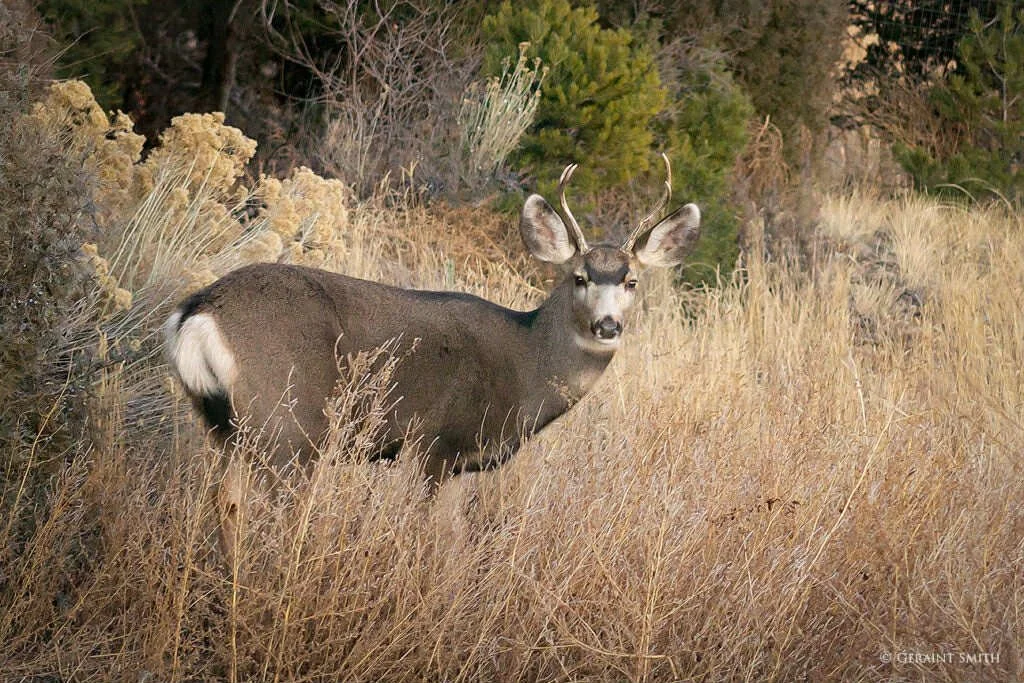


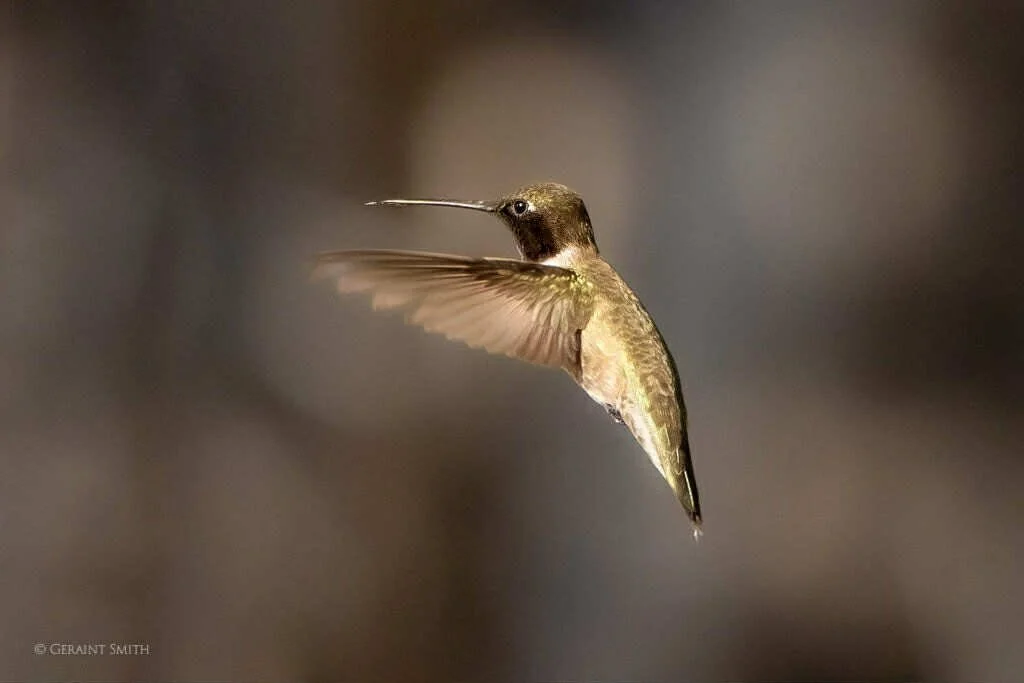







Sources
This information and photographs on this page was compiled by Joan Norris. We thank her for her hours and hours of contacting our local birders, research, and writing.

